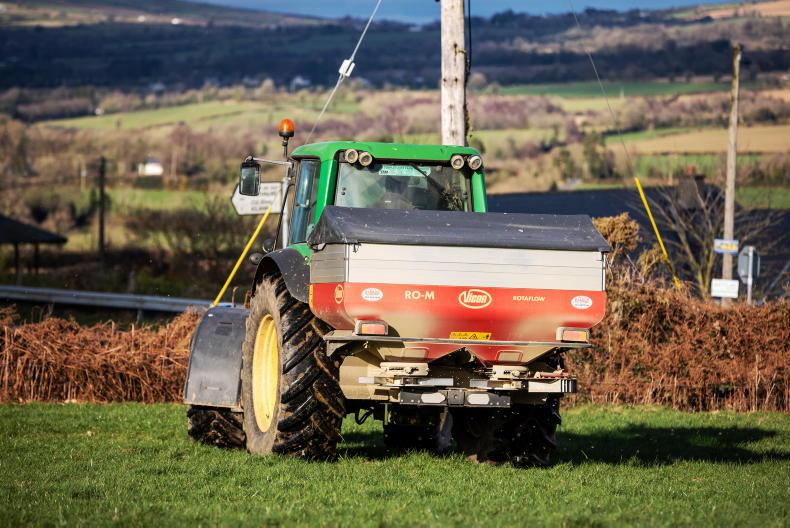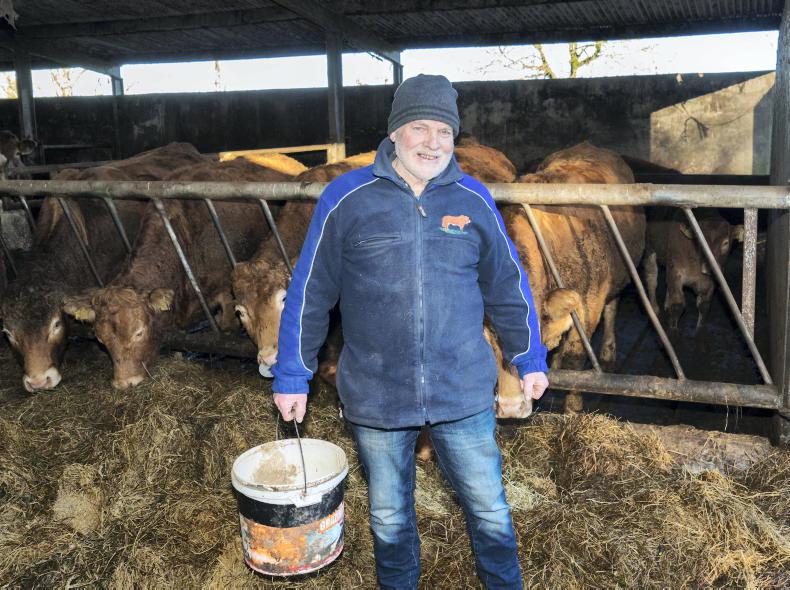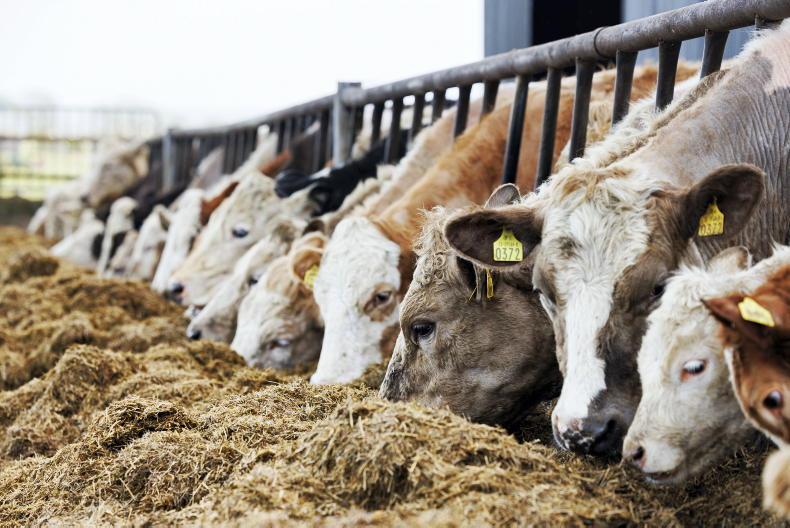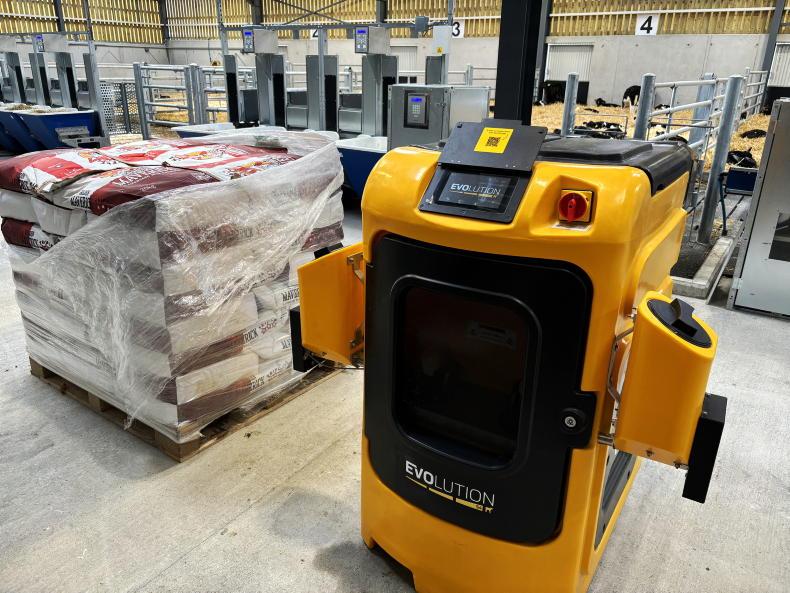As we approach the end of April, fertiliser plans will be kicking into gear. Those that do a split fertiliser application on silage ground will need to go back in with the second application shortly. How much to spread now depends on how much was spread up to now, and whether or not the field got slurry. In total, 80 to 100 units/acre of nitrogen is required for a good first cut.
Presume there was 15 to 20 units supplied in slurry. On heavy land where no fertiliser was applied to silage ground yet and where there is good grass covers on it, I would consider applying 50 to 60 units/acre now and maybe cut it earlier than normal before closing up for a second cut.
On grazing ground, well stocked farms with a high demand for grass will need to be getting 0.8 units/acre of nitrogen per day. This means that if cows are on a 20 day rotation length, the paddock will need 16 units/acre of nitrogen after grazing. Fields with good clover contents will need about half of this. Some farmers will apply a small amount after every grazing, while others will only spread every second round.
Don’t forget sulphur and potash. Grazing fields need about 16 units/acre of sulphur each year, while potash requirement will be based on soil test results. Many farmers are discovering that because they had to feed so much meal last year, their phosphorus allowance for this year is very small.
Most farmers have either started or are about to start the breeding season. A couple of points; good heat detection is critical. The surest sign of heat is a cow standing to be mounted. More often than not the cow is not seen standing, so you need to keep an eye on the other signs of heat too, such as more walking, bellowing, trying to mount other cows, tail swishing, discharge from vulva, milk drop, etc. Use tail paint, scratch cards or some other device to help with heat detection. Top up tail paint every five or six days.
Have a diary or notebook and carry it everywhere to record cows acting out of normal because they might be coming into heat. If using sexed semen the best time for insemination is 16 to 20 hours after the start of standing heat.
Sexed semen straws need careful handling by the technician or DIY operator. No more than two straws should be thawed at any one time and the correct procedure followed closely. If this is not happening do not use sexed semen.
This is the best time of the year for reseeding grass or oversowing clover. Soils are warming up, daylight is increasing and the seedlings have all summer to grow and establish the new sward before the darker days of winter.
For oversowing clover, the best results are achieved where fields have good soil fertility to begin with and have good perennial ryegrass content. There are really only two to three weeks left for oversowing this year. When doing a full reseed, ensure that only good grass and clover varieties are sown. For grazing, varieties with four and five stars on the Pasture Profit Index are the most suited to grazing. Ploughing of grassland in a derogation is permitted up to 31 May.
As we approach the end of April, fertiliser plans will be kicking into gear. Those that do a split fertiliser application on silage ground will need to go back in with the second application shortly. How much to spread now depends on how much was spread up to now, and whether or not the field got slurry. In total, 80 to 100 units/acre of nitrogen is required for a good first cut.
Presume there was 15 to 20 units supplied in slurry. On heavy land where no fertiliser was applied to silage ground yet and where there is good grass covers on it, I would consider applying 50 to 60 units/acre now and maybe cut it earlier than normal before closing up for a second cut.
On grazing ground, well stocked farms with a high demand for grass will need to be getting 0.8 units/acre of nitrogen per day. This means that if cows are on a 20 day rotation length, the paddock will need 16 units/acre of nitrogen after grazing. Fields with good clover contents will need about half of this. Some farmers will apply a small amount after every grazing, while others will only spread every second round.
Don’t forget sulphur and potash. Grazing fields need about 16 units/acre of sulphur each year, while potash requirement will be based on soil test results. Many farmers are discovering that because they had to feed so much meal last year, their phosphorus allowance for this year is very small.
Most farmers have either started or are about to start the breeding season. A couple of points; good heat detection is critical. The surest sign of heat is a cow standing to be mounted. More often than not the cow is not seen standing, so you need to keep an eye on the other signs of heat too, such as more walking, bellowing, trying to mount other cows, tail swishing, discharge from vulva, milk drop, etc. Use tail paint, scratch cards or some other device to help with heat detection. Top up tail paint every five or six days.
Have a diary or notebook and carry it everywhere to record cows acting out of normal because they might be coming into heat. If using sexed semen the best time for insemination is 16 to 20 hours after the start of standing heat.
Sexed semen straws need careful handling by the technician or DIY operator. No more than two straws should be thawed at any one time and the correct procedure followed closely. If this is not happening do not use sexed semen.
This is the best time of the year for reseeding grass or oversowing clover. Soils are warming up, daylight is increasing and the seedlings have all summer to grow and establish the new sward before the darker days of winter.
For oversowing clover, the best results are achieved where fields have good soil fertility to begin with and have good perennial ryegrass content. There are really only two to three weeks left for oversowing this year. When doing a full reseed, ensure that only good grass and clover varieties are sown. For grazing, varieties with four and five stars on the Pasture Profit Index are the most suited to grazing. Ploughing of grassland in a derogation is permitted up to 31 May.









SHARING OPTIONS